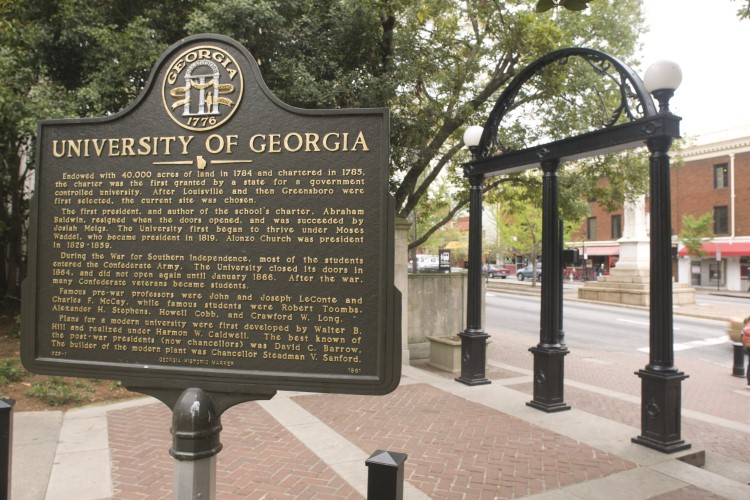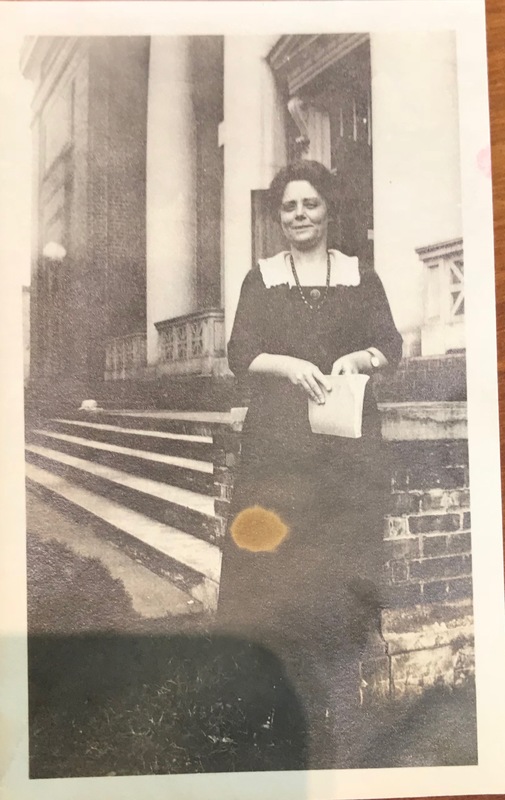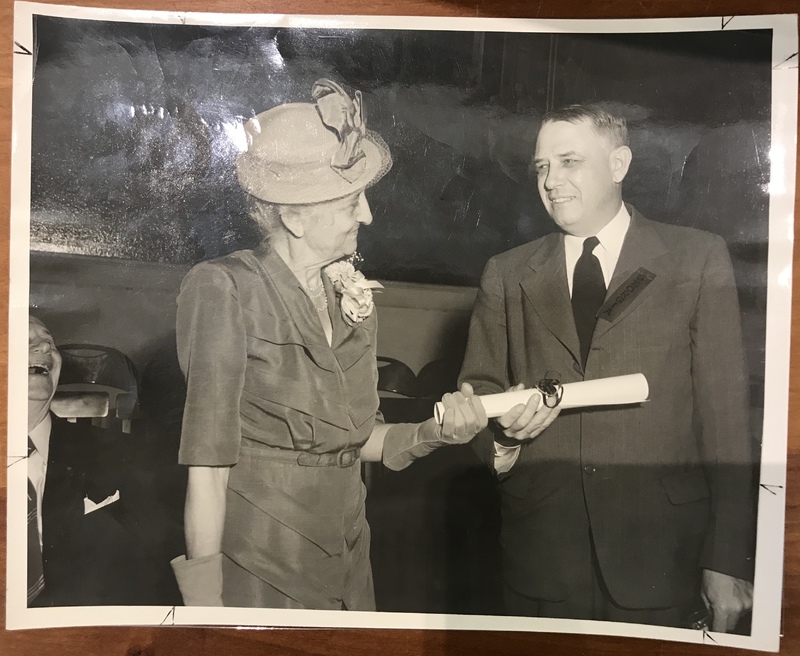Coeducation
This is a photograph of Miss Mary Dorothy Lyndon in 1922 in front of Peabody Hall, located on University of Georgia’s north campus. Her presence is greatly influential to women who follow after her footsteps of receiving an education by the state chartered University -- which also was among the last of its counterparts to authorize coeducation in the Southeast. Beginning in 1897, The Georgia Federation of Women’s club persisted and was rejected numerous times after many years of attempting to forge in the progression of female education. The University finally began integrating women in 1903 and in 1911 the Board of Trustees authorized UGA to grant degrees to female teachers. Mary Dorothy Lyndon received a Master’s of Arts in June 1914 -- the first degree to a woman since 113 years after the establishment of the University in 1801. The feminist movement of the University progressed further as Mary Dorothy Lyndon served as the Dean of Women from 1920 to 1924 and an associate of professor of education. She also established UGA’s first sorority, Phi Mu. In recognition of her paving the way to equality, May 21 is officially known as Mary Lyndon Day. She also has a dormitory in her honor, Lyndon Hall, located in UGA’s south campus. In modern days, in comparison to the strictly male body of UGA in the 19 century, women students have outnumbered the amount of males in the University; the student body of the University of Georgia is 57% female and 43% male.
This photograph of both Chancellor Caldwell and Mary Creswell peering at one another during the Alumni Society Commencement in June 1949 symbolizes the changing dynamic of women presence for the University. The University only then began opening its doors to the full integration of women solely due to World War 1, as the supply of male professors dwindled due to the draft. The war also greatly increased the need for greater expertise in home economics -- including in the education of nutrition, consumer education and clothing thus opening its doors to a new program. The Division of Home of Economics eventually was instituted in 1915 and was designed by Andrew Soule to greatly improve the status of Women in the University. Mary Creswell became the head of Home Economics under the University’s College of Agriculture in 1918 and fifteen years later was granted to become the Dean of Home Economics until 1945. Creswell challenged the South ideology throughout a systematic oppression that attempted to undermine the achievements and skills of women and fought for not only equal opportunities of Women in the University but across the whole South East. She sought to increase the influence of women in agriculture, mainly rural areas, by expanding the Girls’ Canning and Poultry Club. The harsh reality is that although Creswell was immersed in a leadership role, men still held the framework and made the final decisions. In 1949 she became the first women to become a recipient of the Georgia Alumni Award. Creswell now has a dormitory named after her honor and the Division of Home Economics has transformed into the College of Family and Consumer Sciences.
Sources
Dadisman, Carrol. “100 Years of Women at UGA.” The Atlanta Journal Constitution. 15 June 2014, www.myajc.com/news/opinion/100-years-women-uga/eKi9udTfhDfXFaZWMus43I/
Lockerman, Doris . "She Was the First Woman Grad of The University." The Atlanta Constitution [Atlanta] 21 May 1964 Published: 23. Print.
Peek, Gina Gould, and Sharon Y. Nickols. “The Opening Wedge: Mary E. Creswell, Home Economics, and the University of Georgia.” Family and Consumer Sciences Research Journal, no. 4, 2017, p. 363.
Tolbert, Lauren. "2018 marks 100th anniversary of coeducation at UGA." The Red & Black [Athens] 15 January 2018 Published. Online redandblack.com. Web. 11 November 2018 Accessed.


